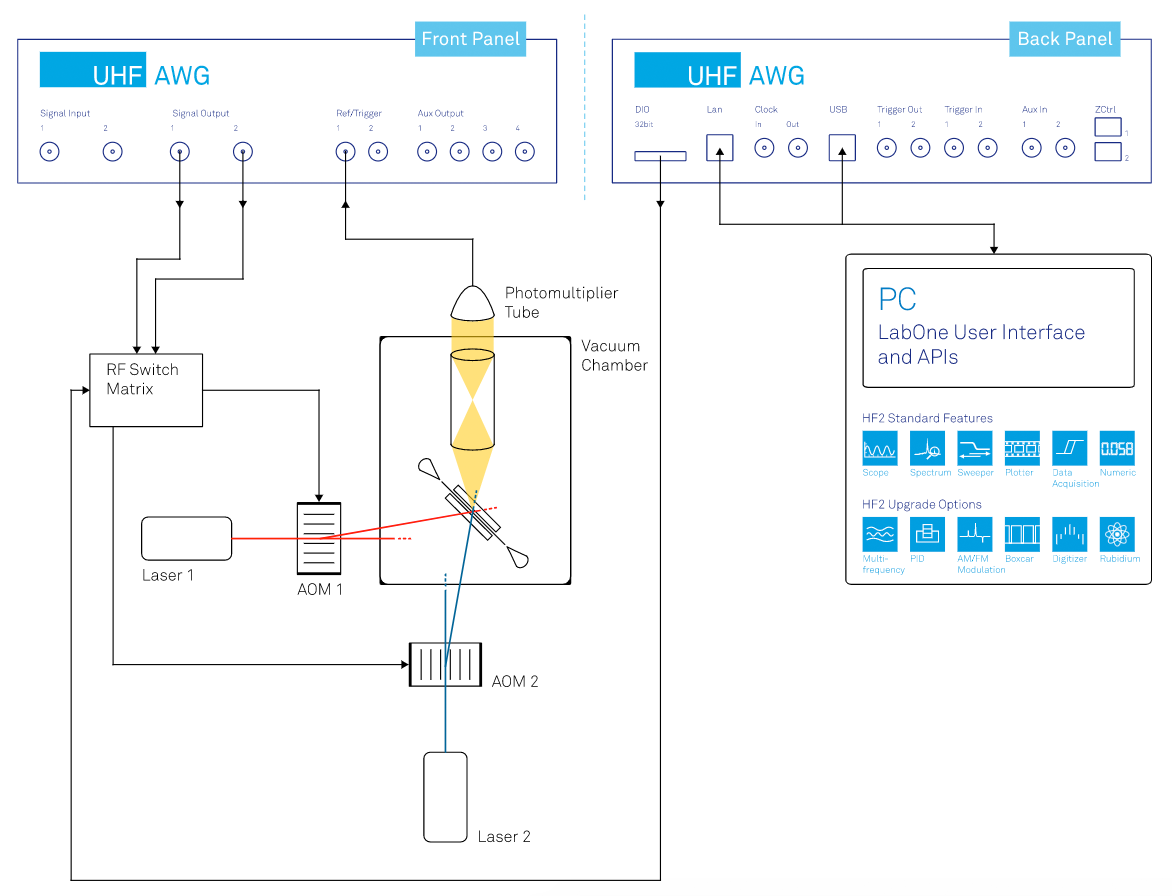Objectives
Initialize, manipulate, and read out the quantum state of a trapped ion qubit.
Benefits
Simplified setup through combination of multi-frequency pulse generation, timing-precise 32 bit TTL control, and pulse counting capability
Description

Ions are kept floating in vacuum by an electromagnetic trap. RF Pulses generated by the AWG are directed to AOMs which deflect and modulate laser beams. In the measurement phase, light scattered by the ions is collected by a lens and detected with photomultiplier tube.
Trapped ion quantum computing aims at speeding up numerical computation by using atomic ions as information carriers (so-called quantum bits, qubits). The UHF hardware platform integrates all essential electronic signal generation and processing tools for these complex experiments. Zurich Instruments technology provides a clean, long-term solution, improving setup reliability and simplifying setup control.
The two phases of a typical trapped ion experiment are performed with the following tools:
- Qubit control (preparation and gate operations): The UHF Arbitrary Waveform Generator generates RF pulses at multiple phase-coherent frequencies and 32-channel TTL signals with precise timing. RF pulses drive acousto-optic modulators (AOMs) or trap electrodes, whereas TTL signals address RF switching and gain stages.
- Qubit readout: The UHF-CNT Pulse Counter analyzes a photomultiplier tube output signal.
Both tools are fully integrated into the LabOne user interface and support easy integration into LabVIEW, Python, and Matlab. Internal cross-domain triggering simplifies the synchronization of preparation and measurement phase, and open the possibility to perform ultra-fast feed-forward protocols for deterministic qubit reset and quantum error correction.
Key features of the UHF Arbitrary Waveform Generator for this application
- AWG amplitude modulation with up to 8 carrier frequencies
- Control of the 32-bit DIO output from the AWG sequencer
- Cross-domain triggering between UHF-AWG and UHF-CNT, that allows for sequence branching
